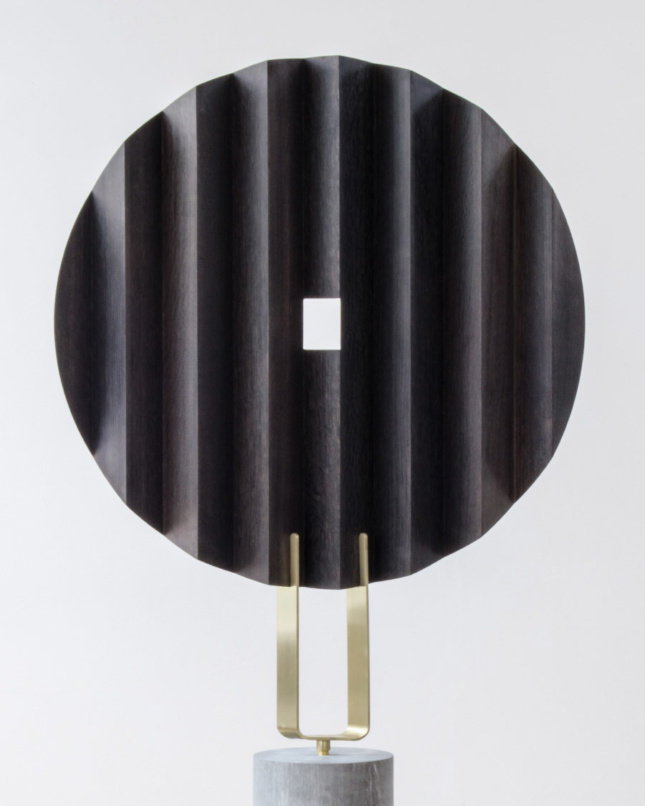Academia has always been a hotbed for innovation, and as part of a new series on under-the-radar projects on university campuses, AN will be taking a look at the smaller projects shaking things up at MIT. Modernized applications of ancient techniques, robotically milled artifacts, and boundary-pushing fabrication methods are producing new materials and structures worth publicizing.
Cyclopean Cannibalism
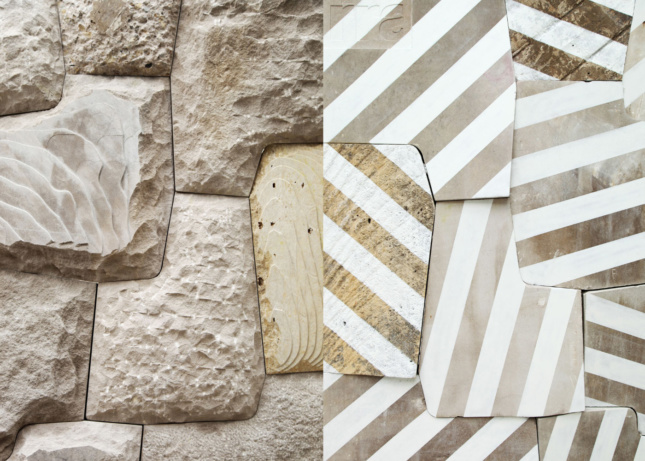
For the research and design studio Matter Design, contemporary reinterpretations of ancient construction and crafting techniques are valuable sources of new architectural insight. The studio, a 2013 winner of the Architectural League Prize for Young Architects + Designers, found that a Bronze Age stone-stacking technique was a fertile testing ground for exploring new uses of construction waste.
Forming walls and structures by fitting boulders and large stones together without working or cutting them first, also known as Cyclopean masonry, is a technique that developed independently all over the world. The limestone boulder walls of the ancient Mycenaean Greeks were supposedly constructed by cyclopes, the only creatures strong enough to move such large rocks.
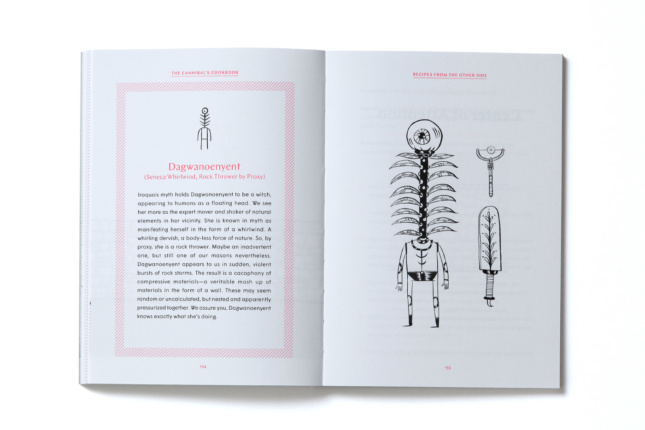
The Inca used this methodology in the 15th century, but unlike the Greeks, they regularly disassembled previously-built walls for new materials, creating cities that were constantly in flux. This recycling of construction materials piqued the interest of Matter Design principals Brandon Clifford and Wes McGee, who wanted to apply the same principles of adaptive, sustainable design to the mountains of architectural debris clogging landfills around the world.
The resulting “cookbook” is a prescription for turning cast-off precast concrete into new structures. In The Cannibal’s Cookbook, Matter Design has created a tongue-in-cheek collection of recipes for turning rubble into reusable materials. The limited-run book is one part primer on how to select stones based on their shape, one part practical instruction guide, and one part guide to one-eyed mythological creatures from around the world.
Not satisfied with a theoretical tome, Matter Design teamed up with fabrication studio Quarra Stone Company to build Cyclopean Cannibalism, a full-scale mock-up of one of their recipes. The resulting wall, a curvilinear assembly of concrete rubble and stone, was installed at the 2017 Seoul Biennale of Architecture and Urbanism in Seoul, South Korea.
Other Masks
Cambridge-based WOJR, named after founder and principal William O’Brien Jr., creates work that bridges the gap between architecture, culture, urbanism, and art. In the exhibition Other Masks, the studio explored the intersection between architectural representation and artifacts, where drawings and models cross over into the realm of physical objects capable of being interpreted in different ways.
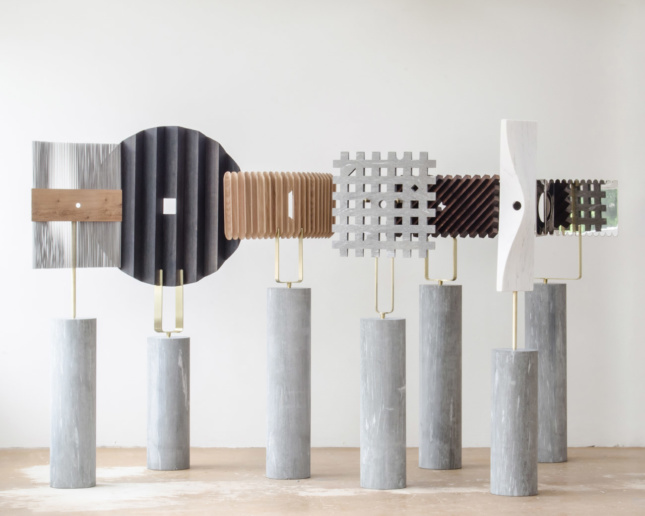
During the Other Masks show, which ran at Balts Projects in Zurich, Switzerland, the WOJR team filtered architectural detailing through the lens of masks. Masks are artifacts with significant cultural value in every society, and transforming the facets, grids, angles, and materials typically found in a facade into “personal” objects was meant to imbue them with the same cultural cachet—and provoke viewers into wondering who crafted them. WOJR designed seven unique masks and a stone bas-relief for the show, enlisting the help of Quarra Stone to fabricate the pieces. Unlike its work for Cyclopean Cannibalism, Quarra Stone used robotic milling combined with traditional techniques to give the sculptural objects a high level of finish.
Other Masks sprung from WOJR’s unbuilt Mask House, a cabin designed for a client seeking a solitary place to grieve in the woods. Through this lens, WOJR created what they call “a range of artifacts that explore the periphery of architectural representation.”
Active Textile
The work of MIT’s Self-Assembly Lab is regularly publicized, whether it is the lab’s self-assembling chair or a rapid 3-D printing method developed with furniture manufacturer Steelcase that allows for super large prints in record time. The lab’s latest foray into active materials, Active Textile, is the culmination of a three-year partnership between lab founder Skylar Tibbits and Steelcase in programmable materials.
Imagine a world where, after buying a pair of pants, a store associate would then heat your clothes until they shrank to the desired fit. Or a high-rise office building where perforations in the shades automatically opened, closed, twisted, or bent to keep the amount of incoming sunlight consistent. In the same way that pine cones open their platelets as humidity swells the wood, the fabric of Active Textile mechanically reacts to light and heat.
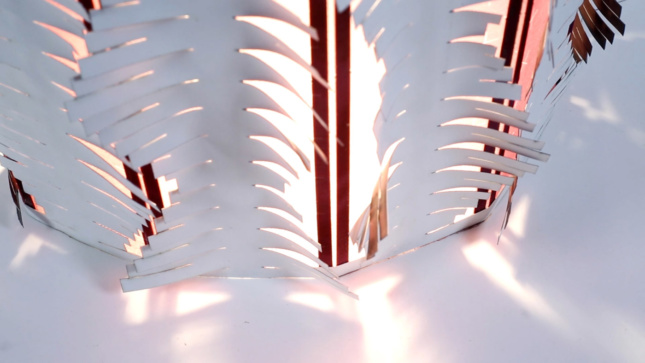
The team thinly shaved materials with different thermal coefficients—the temperatures at which they expand and contract—using a laser to minimize waste, and laminated the layers to form a responsive fabric. The fabric was stretched between a metal scaffolding. Applied-material designers Designtex digitally printed patterns on both sides; the front was printed to allow the fabric to curl in response to heat, while the back allowed light to shine through.
Active Textile is currently on view at the Cooper Hewitt, Smithsonian Design Museum’s The Senses: Design Beyond Vision exhibition through October 28. The Self-Assembly team is researching more commercial uses for the material, such as in self-adjusting furniture or programmable wall coverings.









